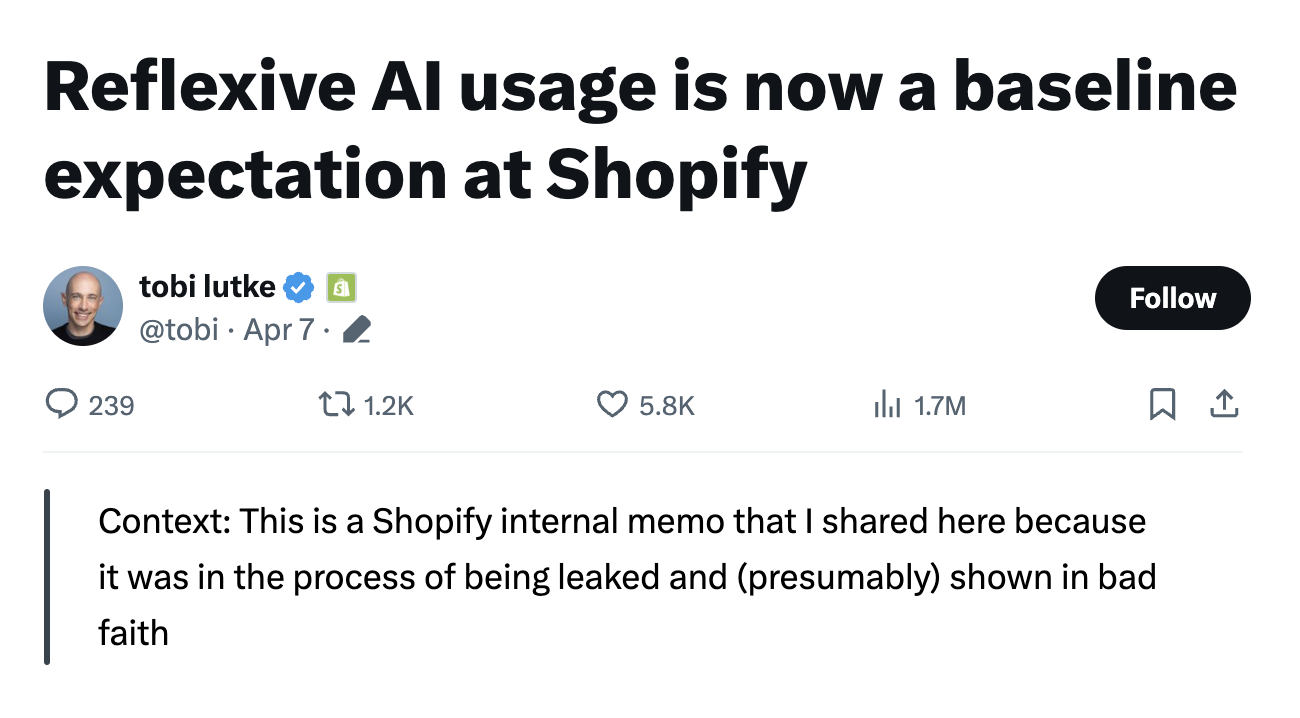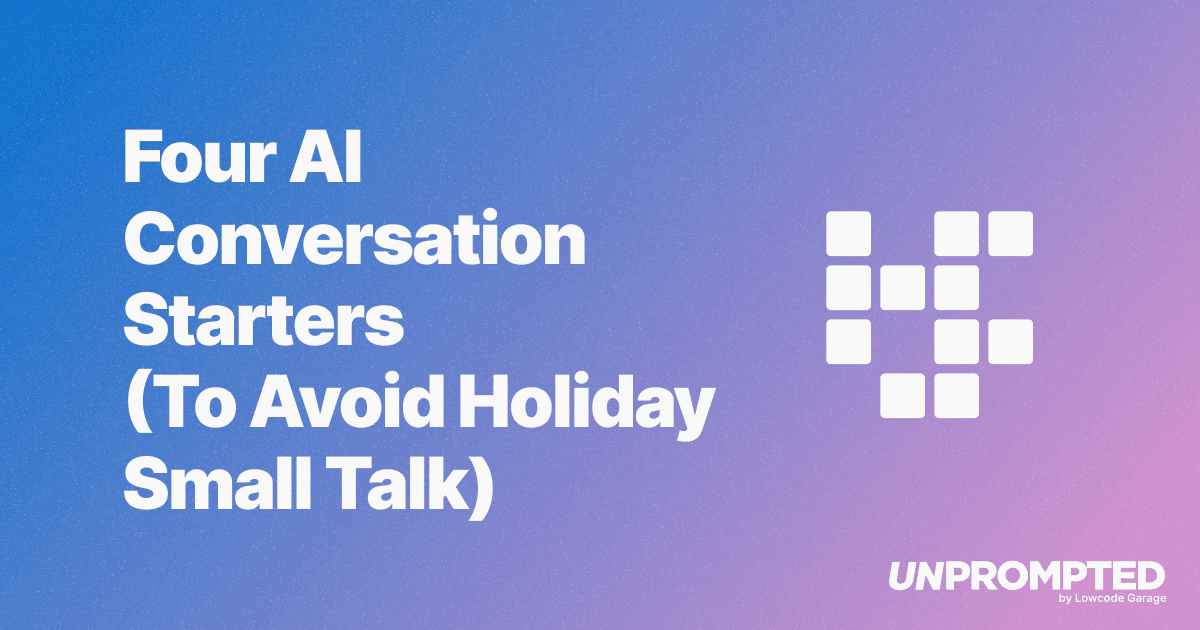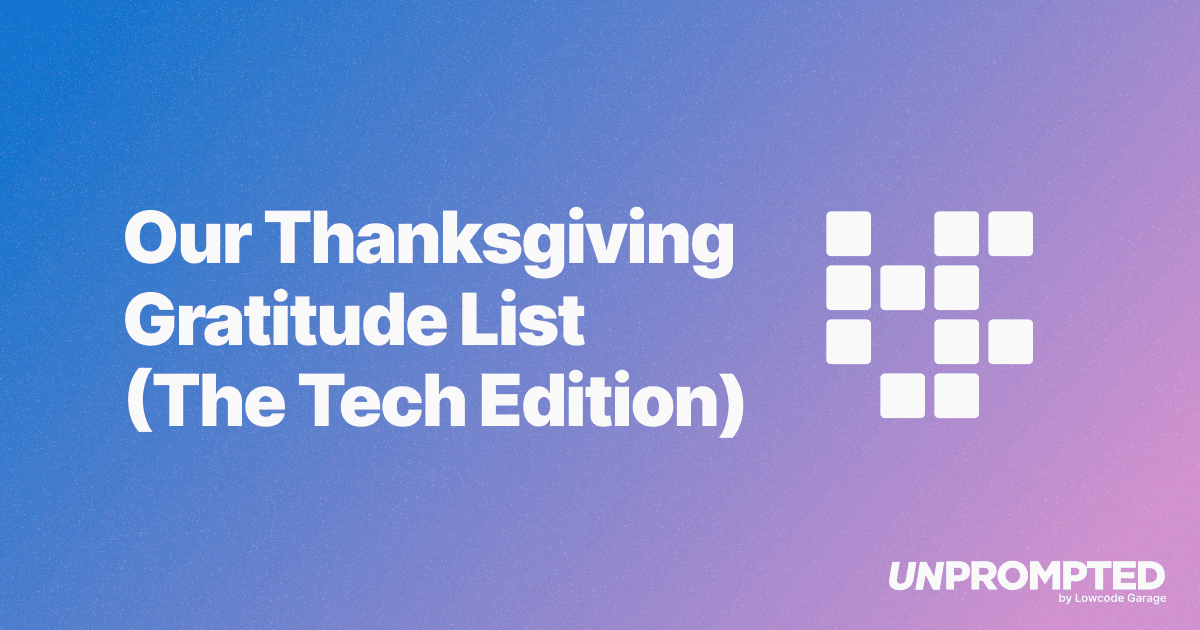Protect Yourself in the DOGE Era
Leveraging AI to supercharge your business, because efficiency is no longer optional in the age of tariffs.
While some companies are sitting on their hands and waiting to react, the smart ones are already adapting by reimagining their entire operational stack with AI.
AI Isn't Just a Tool—It's a Requirement
In a leaked internal memo, Shopify CEO Tobi Lütke made it clear: AI integration is now mandatory across the company. Every team is expected to implement AI in their workflows, no exceptions.

This isn't about following a trend. It's about survival. As business costs rise and forecasting becomes less reliable, leaders are asking:
"Where can we find new efficiencies without sacrificing output?"
Where AI Delivers Real Efficiency for Companies
If you can't predict your cost of goods six months from now, you better be sharp everywhere else. AI gives you compounding leverage—on speed, decision-making, and cost reduction—without waiting for the economy to stabilize.
AI can help you:
-
Automate repetitive workflows in operations, customer service, and administration
-
Forecast demand and pricing scenarios under different tariff conditions
-
Accelerate marketing and content through AI-trained tools to make content more cost-effective
-
Streamline product development with AI-driven prototyping and UX generation
Your competitors are using AI to cut their decision cycles in half while keeping headcount flat. Can you afford not to?
The Game is Changing Globally, and So Should You
Whether you're a business owner or an employee, here's what you should do, like, as soon as yesterday:
-
Audit your workflows: Where are you or your team doing tasks AI could handle?
-
Pick one process and automate it: Think internal reporting, client communications, or research.
-
Make AI integration a standing agenda item—not a side project.
This isn't about replacing people. It's about protecting yourself from a future that's already arrived—and elevating your role to meet it.
AI is how you build optionality. And in the age of economic uncertainty, optionality is your strongest form of leverage.
Frequently Asked Questions
Continue Reading

AI Is a Tool, Not a Strategy
Henry Kravis reminds us that AI is a productivity tool, not a strategy. Strong management, cultural fit, and operational fundamentals still determine whether businesses succeed or fail.

Four AI Conversation Starters (To Avoid Holiday Small Talk)
Four timely AI conversation starters covering federal vs state AI regulation, Opus 4.5 capabilities, physical AI in construction, and Michael Burry's bet against Nvidia—perfect for surviving holiday small talk.

Our Thanksgiving Gratitude List (The Tech Edition)
Discover the AI tools transforming how we build products at Lowcode Garage. From publishing content with Claude Desktop to building prototypes in weeks instead of quarters, here's our Thanksgiving gratitude list for the tech that makes it all possible.